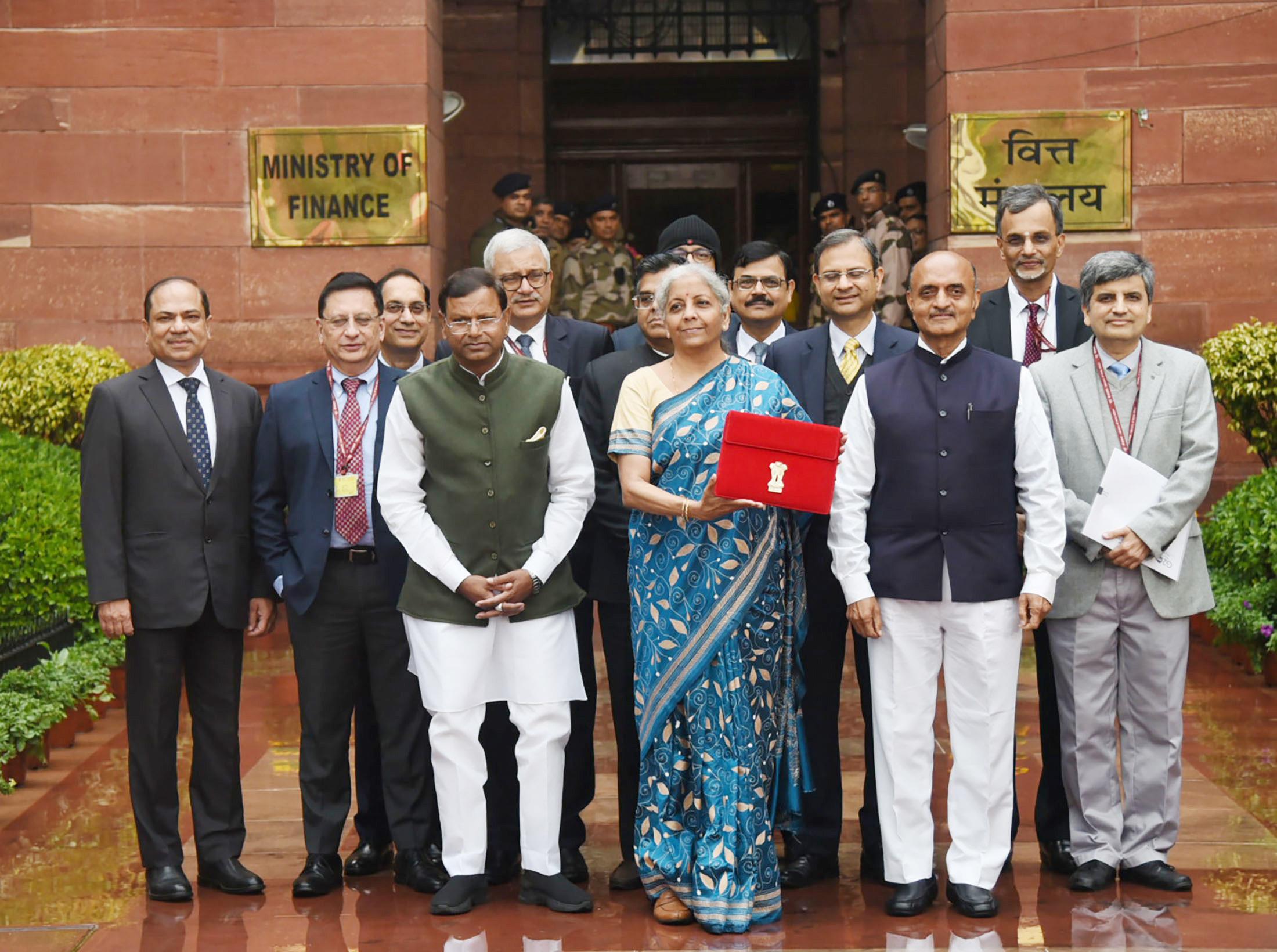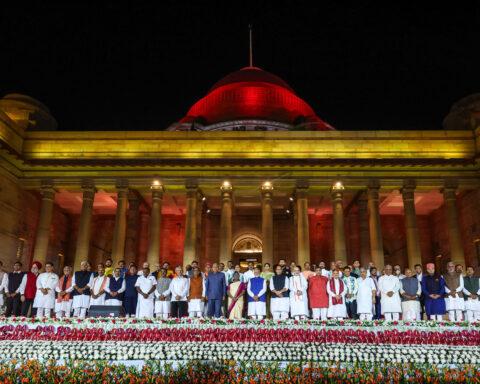News publications are in raptures over Finance Minister Nirmala Sitharaman not announcing vote-fetching freebies in her interim budget of February 1. They are making a virtue of what is expected of any government facing the hustings. In 2009, Finance Minister Pranab Mukherjee said “constitutional propriety requires that new government formulates the tax and expenditure policies” for the next financial year. Paying homage to such niceties and with an eye on the coming elections, the Manmohan Singh government wrote off about ₹65,000 in farm loans the previous year.
In 2004, Finance Minister Jaswant Singh in the Atal Bihari Vajpayee government asked Parliament to approve just such expenditure as was necessary to keep the government going until a new one was in place.
In the 2014 interim budget, the convention was again observed, and Finance Minister P. Chidambaram only recounted the achievements of the UPA government. He held out some promises should the government be returned to office. Sitharaman has done just that. She deserves kudos for not giving propriety the miss like Finance Minister Piyush Goyal in 2019, who announced transfers of ₹6,000 a year to each farming household owning less than five acres, in three equal instalments. To ensure the transfers happened before the elections, the PM-Kisan scheme, as it is called, was backdated to December 2018, so that the first instalment could be paid before the model code of conduct kicked in. (The outlay was ₹75,000 crore in 2019-20 and is ₹60,000 crore for the coming year.)
There was buzz that Sitharaman would raise the quantum of these transfers. That she refrained perhaps indicates the ruling party’s confidence that it will be returned to power.
Sitharaman’s budget speech was peppered with superlatives. She said the past 10 years were “transformational” for the economy and people were looking to the future with “hope and optimism”. In fact, growth during the past 10 years at 5.09% was slower than during the previous 10, when it grew by 6.69% on average annually. Prime Minister Manmohan Singh did not have to deal with a debilitating event like the pandemic, but he had to battle two shocks, one caused by high oil and food prices, and the other by the global banking crisis.
Winking at facts, the finance minister said that 25 crore people have been pulled out of multi-dimensional poverty over the past 10 years. Why NITI Aayog’s Multidimensional Poverty Index is not an accurate measure of poverty has been articulated elsewhere in this space. (Consumption expenditure is not one of the 12 criteria.) Sitharaman gave the game away when she said that free foodgrains for 800 million people has driven away food anxiety. (The Cabinet had taken the decision to extend free rations to 813.5 million people for five years in November 2023.)
An example of tone-deaf policymaking is the proposal to set up a “high-powered committee” to examine the consequences of “fast population growth and demographic changes”.
This seems to be an ideological exercise, like the promotion of traditional agriculture, because India’s fertility rate at two births per woman is less than the replacement level of 2.1. The population is growing because of momentum, not because of high fertility.
Optics aside, the government continues to boost the economy with high capital expenditure. Spending on this account this year was ₹50,000 crore less than the budget estimates. As a share of total expenditure, it was 21% — one percent less than the budget estimates. This year’s capital expenditure was 28% more than in 2022-23. Next year’s will see a jump of 17% to ₹11,11,111 crore. If there is a numerological significance to this number, the finance minister did not disclose it.
Given the emphasis on improving logistics and reducing transportation cost, the Railways get 23% of the central government’s capital expenditure or ₹252,000 crore, for their own capital investment. Another ₹13,000 crore will come from internal and extrabudgetary resources (IEBR). Over the past five years, the capital expenditure of the Railways has grown by 76% and the Central government’s budget support has increased 3.5 times.
Such massive investment should have increased carrying capacity. There should have been a jump in traffic revenues as well. But the performance is satisfactory, not spectacular. The gross traffic receipts from both passengers and goods has risen by about 50% over the past five years. Operating expenses —mainly staff salaries and pensions—consume three-fourths of it. After appropriations for passenger amenities, track renewals and safety measures, little surplus is left. The share of expenses (including appropriations) in receipts has been above 96% over the past five years. This year it is nearly 99%. In fact, it is quite possible that certain items of expenditure have been deferred to show a small surplus. It is very likely that the Railways have suffered an actual loss this year, as in many previous years.
The government’s total receipts have grown by 12.5% over the previous year. The rate of corporation tax growth was lower at 11.7%. Receipts from income tax have shown robust growth of 22.7%.
The outlay on major subsidies for food, fertilisers, petroleum, crop insurance and credit has been reduced by ₹28,600 crore to about ₹418,375 crore. If the conflict in West Asia does not flare up, and the rice and wheat output are not impacted by adverse weather, these figures might hold.
The finance minister has said Nano DAP, a plant nutrient, will be promoted after the “successful adoption” of nano urea. Nano urea is manufactured by Iffco, a fertiliser cooperative. It is a foliar spray, unlike urea, which is applied to the soil. The company says that, against two bags of urea (of 45 kg each) per acre of wheat or rice, just one bag is required if one litre of nano urea is sprayed.
But a study done by Punjab Agricultural University on its own experimental plots and at 17 Krishi Vigyan Kendras showed 15-20% reduction in yield, and a similar reduction in protein content when nano urea was sprayed as recommended on rice and wheat. Studies done by the Indian Agricultural Research Institute (IARI), Delhi showed a “significant decline in yield” when the cooperative’s recommendation was followed.
When 75% percent of the recommended nitrogen in urea form was applied, along with one litre of urea per acre, the yields were maintained. But nano urea is 4% nitrogen compared to urea’s nitrogen content of 46%. An IARI scientist I spoke to thinks the plants are compensating by drawing nitrogen stored in soil and over time soil will be depleted of the nutrient. But the government is promoting nano urea because it is not subsidized.
In Haryana, farmers have protested against the thrusting of nano urea on them by fertiliser dealers who do not sell urea unless nano urea is bought. In the quest to reduce the fertiliser subsidy the government seems to be playing with food security.

























